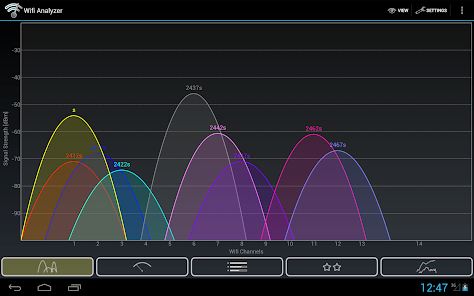Table of Contents
- “Why does my property need so many access points?”
- “Guests/residents usually love our WiFi- so why are our satisfaction scores suddenly going down?”
- “What should I do to keep our guest/resident WiFi performing well?”
- “We just upgraded our bandwidth. So why are we still getting complaints about slow WiFi?”
- “How can I tell if our WiFi is performing well (before everyone starts complaining)?”
- “What other WiFi pitfalls should I watch out for?”
Free WiFi has become a baseline expectation for hotels, multifamily communities, student housing, and senior living facilities. Nearly 100% of travelers now cite WiFi as a crucial offering for hotels. It’s also increasingly cited by residents as a must-have. But it’s not enough to offer free WiFi; it needs to meet or even exceed your guests’ and residents’ expectations. If your network is slow, unreliable, and hard to use, your guests and residents will be frustrated and displeased. Your ratings will go down, and that may hurt your revenue.
There are a lot of details that go into creating great WiFi. An experienced provider such as WorldVue can help guide you through what you need for a fantastic WiFi experience. However, it’s still a good idea for property owners to understand some basic answers to common questions. Why do we recommend particular network designs? What should you watch out for throughout the life of your network?
It’s important to keep in mind that your guests/residents are the reason for providing great WiFi. Thus, how you approach your WiFi network should reflect their expectations. Great WiFi means happier guests and residents, and we hope the answers below will clarify how we can help you achieve that.
“Why does my property need so many access points?”
A common question that property owners and GMs ask is, “Why do I need so many access points in my property? My last network was 7 APs, and now you’re suggesting I upgrade to 20. I had 40 APs before, but now you’re suggesting I upgrade to 110.”
Simply put, technology has changed. Devices are smaller and designed to maximize battery usage. Manufacturers do this by using smaller components and lowering the power to the antennas. We used to be able to install one access point for every 8-10 rooms, then one for every four. But now, it’s not good enough to say, “Well, we’ll stick with what we’ve got.” With guests and residents using more and more mobile devices, along with other changes in usage, your old WiFi network becomes like your phone after three years: It’s time for an upgrade.

The newest standards, WiFi 6E (2020) and WiFi 7 (early 2024), offer more bandwidth than previous versions. However, the signal can’t penetrate building materials as well as older technology did. So, we often need to install one AP per guest room or apartment for a consistent signal. Newer APs have numerous benefits for better WiFi performance. But the downside is that the signal may not be able to travel as far.
WiFi communication is a two-way street. In this sense, the service provider and the property only control 50% of the network. The guest/resident device controls the other 50%. We can turn up the access point power and the device will receive a strong signal from the APs. But if it can’t send back a strong signal, the guest/resident will have a frustrating WiFi experience.
Think of it this way: Say you’re tossing a football back and forth with a six-year-old child. You might be able to throw that ball 30 yards, and the child can catch it on the fly. But when they try to throw the football back, they can only throw it back 10 or 20 yards. They’re smaller and not as strong. The same principle applies to WiFi, especially with power-saving handheld devices.

The flip side of this is actually a good thing: Placing APs within each room or apartment instead of in hallways means the walls themselves can help keep the APs from interfering with each other. This, too, will improve the signal received by guest/resident devices.
It’s also worth noting that the number of APs your property will need depends not only on the technology but also on the construction materials used. In other words, not all properties using the latest WiFi technology will need the same number of APs. The graphic below summarizes what AP density you might need to achieve a good WiFi signal (-50dB), depending on how your property is built.

Remember, the goal is to offer a great experience to your guests, and offering great WiFi is no exception. Upgrading to meet the latest WiFi standards, even if it requires more APs, will ultimately pay off in happier guests/residents, higher satisfaction scores, and increased revenue opportunities.
“Guests/residents usually love our WiFi- so why are our satisfaction scores suddenly going down?”
Picture a hotel swimming pool – nothing fancy, just a mid-sized pool, a few years old, clean but fairly basic.
When the hotel is at average occupancy, so is the pool. Maybe a few kids or a family or two will be using the pool at any given time. And even though the pool may not be a fancy resort pool, guests are generally pretty happy with it.
Now, picture that same pool during peak vacation time in the summer. The hotel is at capacity, and lots of families are using the pool at any given time. Maybe one family has brought some pool toys, and a couple of kids are doing cannonballs in the deep end. It’s the same pool, but suddenly, those who are using it are less happy with it.

The WiFi at your property is similar to that pool: Your network hasn’t changed; the demand has changed. Even if you’ve installed a great WiFi solution that typically makes your guests/residents happy, when you have a lot of people using it at once (especially when some of them are using it for things like streaming content), it’s going to get crowded, and those using it might not be as happy with it. And if they’re not happy, your satisfaction scores will go down.
The good news is that there are things you can do to “make the pool bigger,” so to speak:
- Adjust your bandwidth to be sure you have enough for all your guests/residents, even those who are streaming movies or TV content. At least 2-5 Mbps per room is suggested at minimum, but this will depend on how your guests/residents are using your network.
- If you don’t know what bandwidth is being used, how do you know if you’ve got enough? Make sure your solution allows you to determine your bandwidth usage and get notified when your usage exceeds your ISP bandwidth – your WiFi provider should be tracking this. If not, upgrade to a new provider!

- Your provider should also be able to give you basic information about how your network is being used. For example, are lots of your guests/residents using Zoom or Netflix? This will help inform you when assessing your property’s bandwidth needs.
- Use your bandwidth more efficiently by choosing equipment that supports features such as bursting, which allocates bandwidth and can temporarily increase the allotment for a guest/resident who’s using more, making the WiFi experience better for everyone by removing bottlenecks.
- Be sure that your access points can handle the increased usage that guests/residents demand.
- Your network should be designed to meet at least the WiFi 6E standard. This will improve performance and keep your satisfaction scores higher. Newer handheld devices like the iPhone 15 are optimized to use the 6 GHz frequency band, and if your equipment can’t match that, your guests will likely be frustrated.
- Add more APs and get them closer to the guests/residents, preferably out of the hallway and into the guest rooms or apartments. This will improve the signal even when there’s a lot of WiFi traffic on your property.
- Don’t settle for SOHO equipment! It does not have the features you’ll need to provide a great WiFi experience. There’s a reason that enterprise-grade equipment costs a bit more. It’s because such equipment is made to handle the challenges of many people using a network at once for demanding tasks that require a lot of bandwidth. This results not only in improved performance but also easier management and better security. Trying to save money by choosing SOHO equipment will only cost you in the end.
- There are things that an experienced provider like WorldVue can do to help improve the performance of your WiFi, including channel planning, access point placement, and bandwidth allocation. Take advantage of these for a better WiFi experience.
“What should I do to keep our guest/resident WiFi performing well?”
As a property owner, you’re undoubtedly aware by now that providing an excellent experience is not a “set it and forget it” item – and WiFi is no exception. Things change over time that can cause your WiFi to worsen. Maybe you’ve done some renovations, or maybe an increase in complaints hints at a problem. Perhaps it’s just been a while since you’ve upgraded, and technology has passed you by.
Our team at WorldVue is always available to review your WiFi solution with you for possible improvements. However, here are a few other things you should keep in mind that can improve your WiFi’s performance over time and avoid some common issues:
- Plan to review and upgrade your WiFi at least every few years. This one is a must! Developments in technology generally move at least that quickly. While your equipment should still work after that time, it probably won’t work well because it won’t be able to take advantage of higher speeds or other features that can improve the performance of your network. Newer enterprise-grade devices are designed for increased speed and capacity. They can also better handle the mobile devices that are becoming the norm on your property’s network. If you’re using older equipment that doesn’t meet the latest standards, your guests/residents may struggle to connect their newer smartphones, tablets, laptops, and other devices just because your network wasn’t designed to handle them.
- Reconsider the location of your APs. It may be cheaper, more convenient, or less intrusive to put APs only in common areas like hallways, but that probably won’t provide the best experience. Your installer might suggest putting APs in each room or apartment to boost signal strength and capacity by allowing channels to be used more efficiently. Such improvements, by their nature, can be somewhat disruptive. Still, they will generally pay off over time by making your guests/residents happier and more likely to rate you well, recommend your property to others, and return again and again.
- Ensure that you’re providing enough bandwidth from the outset. Your provider can implement several techniques to allocate bandwidth so that each guest/resident has a good experience and no one is hogging the whole network. Of course, we can help you to implement those techniques. But it’s also essential to ensure you have enough bandwidth from your ISP. With many guests now using streaming, casting, and videoconferencing applications, the need for bandwidth keeps increasing. Remember, your property isn’t just a larger version of your house, so it’s not enough just to double or triple the capacity of your home connection.
“We just upgraded our bandwidth. So why are we still getting complaints about slow WiFi?”
As your guests/residents bring more and more devices with them, they’ve come to expect more available bandwidth for demanding apps such as streaming and gaming. To meet that expectation, multiple flags now require properties to increase bandwidth from their ISP, and many independents are also adding bandwidth. If you’ve already upgraded your ISP bandwidth, that’s great – but it comes with a caveat: You may need to upgrade your gateway to use all that capacity and speed.
Older-generation gateways may not be able to take advantage of higher available bandwidth. Even when the rest of your network is configured just right, the wrong gateway can keep you from seeing optimal performance. It’s like a kink in the hose that you need to fix so that WiFi traffic can flow.

It’s crucial to have the right gateway for your available bandwidth and to let us know when you upgrade your bandwidth so we can help you take advantage of the extra capacity and remove bottlenecks from your network. Newer, more cost-effective gateways are now available to offer better performance – instead of a kinked hose, you’ll have a firehose!
If you’ve got a medium-to-large property with 500 Mbps or even more bandwidth and haven’t upgraded your gateway in a while, call us to find out your options for taking advantage of your available speed and capacity. Your network’s performance will likely improve, and your guests/residents will be happier!
“How can I tell if our WiFi is performing well (before everyone starts complaining)?”
Your property can probably get away with the same bedspreads for a while, and you might not need to change your breakfast menu very often, but that won’t work for your WiFi. Left unattended, WiFi performance will decline over time.
If you work with a provider like WorldVue, we’ll monitor your network for potential problems and notify you proactively when you might need some adjustments. But it can be enlightening for a property owner or manager to check your property’s WiFi periodically. If you’re unaware of what your guests/residents are experiencing when they use your WiFi, you’re putting yourself at risk of negative reviews and lower revenue.
To understand what they’ll experience, walk around your property with your laptop, tablet, or phone.
Some items you should check include the following:
- See how easy or difficult it is to log into your property’s WiFi. Are there stumbling blocks to logging in that frustrate your guests? Do you have to log in repeatedly as you move around your property? Does your device get kicked off the network after a certain length of time? We can help you create a login process that will be easier for your guests/residents while enabling you to capitalize on your guest/resident relationships.
- Are there locations within your property where WiFi is hard to pick up or the connection seems slow? Use a free application such as InSSIDer, WiFi Analyzer, or WiFi Analytics to help locate dead zones or places where interference might occur. We may be able to perform diagnostics and adjust your settings remotely to compensate, or we’d be happy to visit your property to find sources of interference and address how to work around them.

Of course, if you haven’t upgraded your equipment in several years, you may need to migrate to newer technology that can handle 6 GHz mobile devices and other challenges. If so, we can help you find a solution that works within your budget while keeping your guests/residents happy.
“What other WiFi pitfalls should I watch out for?”
One key point to remember: Your guest/resident network is different from your home network. While this may sound obvious at first, the potential issues that can arise aren’t always the ones that come to mind. Among the most common reasons for complaints are:
- Cumbersome logins – This includes trouble getting to the login screen, difficulty logging in on mobile devices and gaming consoles, and having to log in repeatedly (e.g., as guests/residents move around your property or after they’ve been on your network for a certain length of time). All these lead to frustration and tech support calls and may lose you a repeat customer.
- Performance issues – Complaints include poor or inconsistent performance, lack of speed, locations within your property where the WiFi doesn’t perform well, and inconsistencies across your brand.
- No rewards for loyalty – Some hospitality brands are beginning to address this by offering automatic logins for rewards program members or performance boosts such as a faster bandwidth tier for frequent customers. You can even tie special offers for frequent visitors to WiFi use at your business.
If your guests/residents are becoming frustrated about any of these issues, or if it’s been a while since you upgraded your network, please call us. WorldVue is your ONE point of contact for design, installation, service, and support nationwide. We want your guests/residents to be happy and your business to succeed, and we have many options available to help meet your needs.

